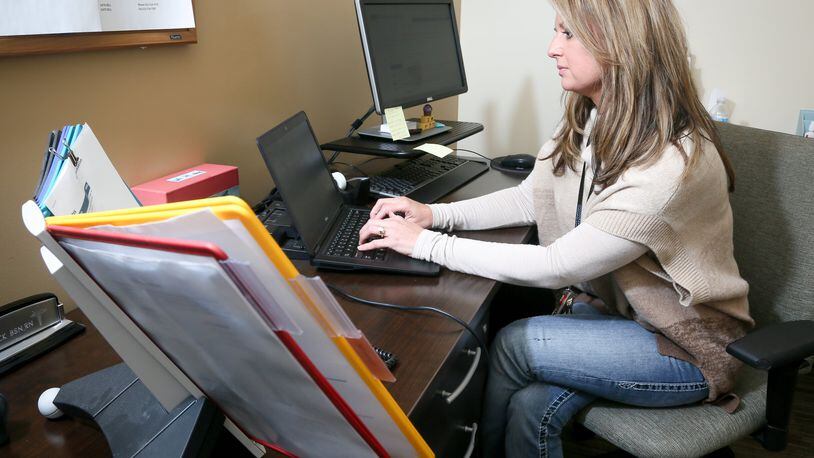Today is National Survivors of Suicide Day, which falls on the Saturday before Thanksgiving, and there's a push in the Ohio Statehouse to designate the same day as Ohio Survivors of Suicide Loss Day.
Clark Flatt, president of The Jason Foundation, said hardly anything is being done despite the fact that tens of thousands of children and young adults have died since 1999, according to the Centers for Disease Control and Prevention.
“We call it the silent epidemic,” Flatt said, calling suicide “a national public health issue facing our society” that seemingly goes unaddressed.
Flatt founded the Tennessee-based Jason Foundation following the 1997 suicide of his youngest son, and since then has nearly 100 affiliate offices including one that opened at Beckett Springs Hospital in West Chester Twp.
Suicide is the third-leading cause of death for those 10 to 22 years old, and in 2014 — the most-recent year reported by the CDC — it was number two. More than 4,100 children and young adults took their own lives in 2014.
“Think about the enormity of that and the lack of awareness and education around it, and the lack of talking about it,” said Beckett Springs spokeswoman Kim Guy.
Suicides from this large age group have grown every year since 2008, and over that five-year period suicides have skyrocketed by 21.6 percent.
Guy said “the biggest reason” for being a partner with the Jason Foundation “is to try to save lives in young people in our community” as nationwide 100-plus children and young adults are killing themselves.
“That’s how many we’re losing to suicide a week and no one wants to talk about it,” she said.
Ohio Rep. Marlene Anielski, R-Cleveland, has been a champion for suicide prevention and awareness in the Ohio Statehouse. Her son, Joseph Anielski, was an 18-year-old high school senior when he took his life in March 2010. Just a more than two years later, Anielski introduced the “Jason Flatt Act, Ohio, in honor of Joseph Anielski” which requires schools and educational service centers to train teachers and certain other staff in youth suicide awareness and prevention.
Anielski also led the charge with House Bill 28, which establishes suicide prevention programs in colleges and universities, and established the state-run website SuicidePrevention.ohio.gov.
“The majority of the time (suicide) is preventable with the appropriate and available behavioral care,” said Anielski, adding that many times it’s not just a mental health issue. It could be a medical issue prompted from concussions sustained in a sport, she said.
Anielski’s House Bill 440, which would establish Ohio Survivors of Suicide Loss Day, has passed out of the Ohio House in May and has already received one hearing in late May in the State and Local Government committee in the Ohio Senate. She expects it to passed out of that committee after Thanksgiving and could receive a Senate floor vote soon after.
Establishing a day for survivors of suicide loss is to help shine a spotlight on the issue in Ohio, Anielski said. But suicide awareness and prevention isn’t just trying to identify the signs and symptoms, she said. Her bill, House Bill 151, expands the offenses of menacing by bullying and cyber-bullying. That became effective in August.
“I am trying to look at all facets that would cause or influence why someone would think that way,” Anielski said.
Suicide is like no other death, she said, because it can be preventable only if more people understand and are aware of the causes and signs.
“This is an issue that we need to address head on is that we need to make sure the people who are contemplating suicide and the survivors that there is assistance out there,” she said. “But you need to speak up or a friend needs to speak up if something is wrong.”
— — —
SUICIDE PREVENTION RESOURCES
24/7 resources
- Butler County Mental Health Crisis Line: 1-844-4CRISIS (1-844-427-4747)
- Beckett Springs Hospital: 513-942-9500 or visit www.beckettsprings.com (for adults)
- Text "4HOPE" to 741741 or call 1-800-273-TALK (1-800-273-8255)
Local resources
- Butler Behavioral: 513-881-7189 or visit www.bbhs.org (for children and adults)
- Access Counseling: 513- 649-8008 or visit www.acscounseling.com (for children and adults)
- Community Behavioral: 513-887-8500 or visit cbh-services.org (for children and adults)
- TLC (Transitional Living): 513-863-6383 or visit tliving.org (for adults)
)
About the Author
